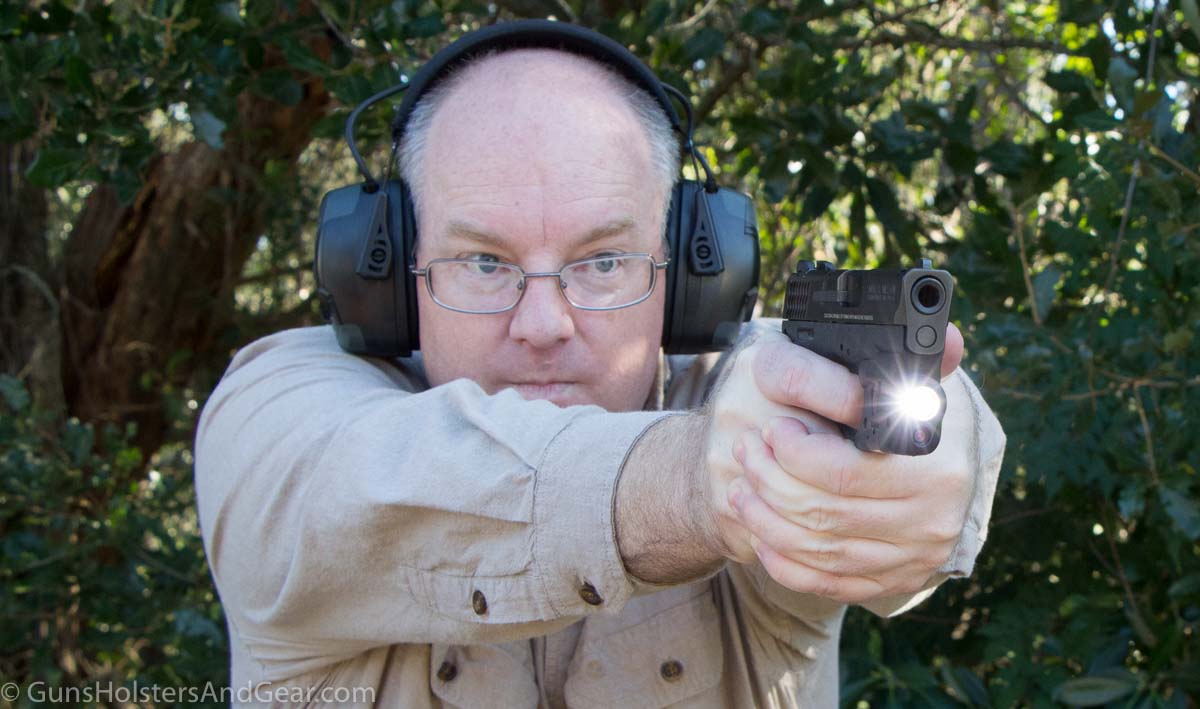Flashlights are critical for self-defense, survival and law enforcement duties. You can’t see in the dark, so you are at a serious disadvantage without a quality light.
Cutting through the marketing hype to find the best tactical flashlight is an ongoing problem. While the ANSI/PLATO FL 1 standard is sometimes touted as an attempt to help consumers, I believe it falls significantly short in both testing and transparency.
That’s where GunsHolstersAndGear.com comes in.
The flashlight reviews I conduct are far more in-depth than you will find elsewhere. I examine output, durability and runtime by actually testing the lights and reporting the results. You need a flashlight you can count on in a tight situation, and I want to provide you with the information you need to make an informed decision.
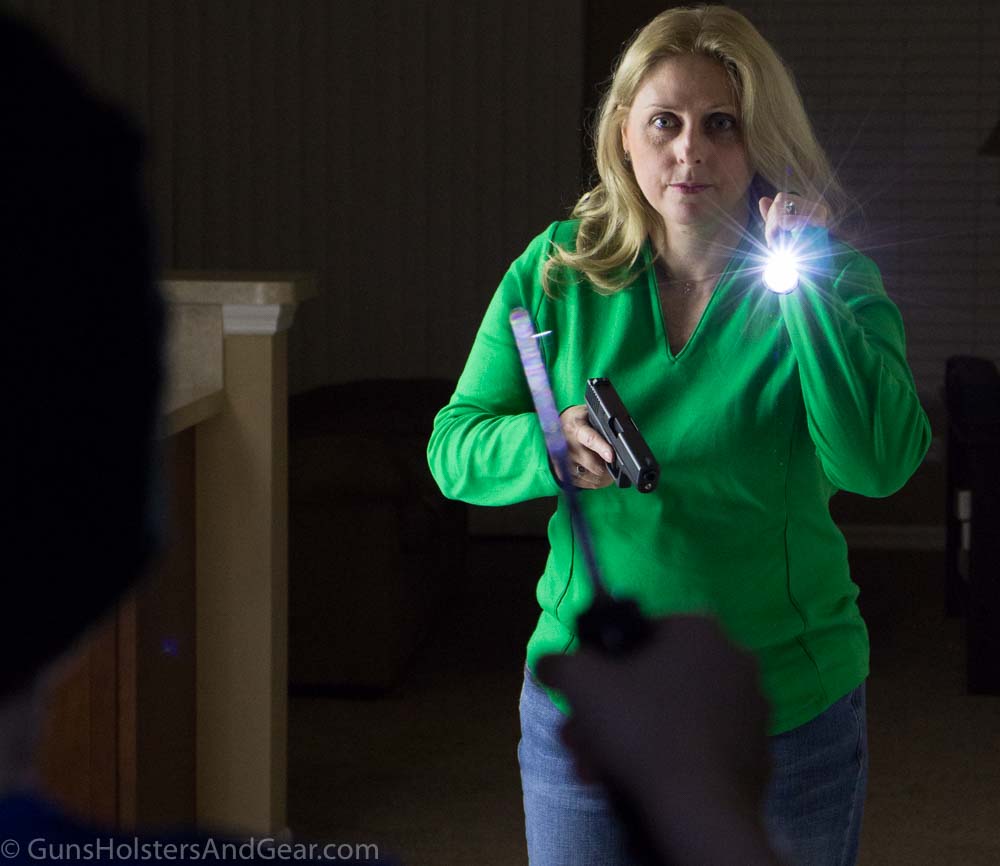
So, let’s take a look at the flashlights I’ve reviewed and what my testing consists of.
Flashlight Reviews
Here are the recent flashlight reviews that I’ve conducted according to my standards that were current at the time of the testing. All lights were tested in the same integrating sphere and with the same light meter. (For more information on my testing protocols, scroll down the page.)
Click the flashlight name in the left column to go to the complete review, and use the table search box to organize the results.
Scroll down below the table for an explanation of the information provided.
| Advertised Output (lumens) | Measured Peak Lux | 50% Output Runtime | Surface Temp | Drop Test | |
| Anker LC90 | 900 | 82,700 | 1 | 103.6 F | pass |
| Coast HP1 | 91 | 10,040 | 32 | 91.0 F | pass |
| Crimson Trace LiNQ | 300 | 27,400 | 59 | 125.9 F | not tested |
| ExtremeBeam M4 Scirrako | 230 | 17,210 | 126 | 116.1 F | fail |
| ExtremeBeam M600 Fusion | 600 | 64,000 | 53 | 142.9 F | fail |
| ExtremeBeam S.A.R. 7 | 130 | 14,150 | 70 | 146.9 F | pass |
| ExtremeBeam XT8-L ProRanger | 302 | 16,920 | 7 | 114.3 F | pass |
| Factor Cossatot 1000 | 1,000 | 91,900 | 42 | 128.8 F | pass |
| Factor Cossatot 1000 XL | 1,000 | 56,600 | 3 | 108.0 F | fail |
| Fenix LD15R – turbo mode with stepdown | 500 | 32,700 | 2 | 101.8 F | pass |
| Fenix LD15R – high mode | 150 | 12,100 | 101 | 96.4 F | pass |
| Fenix PD35 – turbo mode, 3,500 mAh 3.6v 18650 | 1,000 | 91,400 | 10 | 124.3 F | pass |
| Fenix PD35 – turbo mode, CR123A | 1,000 | 96,000 | 9 | 131.3 F | pass |
| Fenix PD35 – high mode 3,500 mAh 3.6v 18650 | 350 | 37,300 | 205 | 114.9 F | pass |
| Fox Fury Rook MD1 | 220 | 25,070 | 108 | 97.8 F | pass |
| Lumintop TD16 – CR123A | 1,000 | 82,200 | 52 | 135.3 F | pass |
| Lumintop TD16 – 2,600 mAh 3.6v 18650 | 1,000 | 79,200 | 115 | 123.0 F | pass |
| Nightstick MT-210 | 120 | 8,660 | 6 | 87.7 F | pass |
| Nightstick NSR-9944XL | 650 | 58,800 | 157 | 118.5 F | pass |
| Nightstick TAC-460XL | 800 | 73,100 | 13 | 140.1 F | pass |
| Olight PL-1 II Valkyrie | 450 | 39,500 | 52 | 141.6 F | pass |
| Olight S30R Baton III – turbo mode with step down | 1,050 | 115,300 | 2 | 132.6 F | pass |
| Olight S30R Baton III – turbo mode no down | 1,050 | 115,300 | 69 | 203.3 F | pass |
| Olight S30R Baton III – high mode | 500 | 53,400 | 189 | 131.4 F | pass |
| PowerTech Micro 90 (Smith & Wesson) | 90 | 6,410 | 140 | 108.6 F | pass |
| Streamlight Polystinger DS LED | 385 | 19,700 | 135 | 124.9 F | pass |
| Streamlight ProTac 1AA | 70 | 6,940 | 76 | 103.2 F | pass |
| Streamlight ProTac 1AAA – alkaline battery | 70 | 7,470 | 36 | 95.5 F | pass |
| Streamlight ProTac 1AAA – lithium battery | 70 | 7,540 | 160 | 96.8 F | pass |
| Streamlight ProTac 2AAA** | 80 | 8,100 | 90 | 89.7 F | pass |
| Streamlight ProTac HL | 750 | 68,600 | 56 | 157.8 F | pass |
| Streamlight ProTac HL3 | 1,100 | 121,500 | 32 | 146.6 F | pass |
| Streamlight ProTac HL USB | 850 | 99,900 | 87 | 124.8 F | pass |
| Streamlight ProTac HL-X – CR123A | 1,000 | 110,200 | 8 | 113.2 F | pass |
| Streamlight ProTac HL-X – 2,600 mAh 3.7v 18650 | 1,000 | 110,200 | 25 | * | pass |
| Streamlight SL-20L | 350 | 32,000 | 94 | 92.6 F | pass |
| Streamlight Stinger DS LED HP | 350 | 41,900 | 119 | 102.5 F | pass |
| Streamlight Stinger DS HPL | 740 | 74,900 | 80 | 113.3 F | pass |
| Streamlight Strion | 116 | 6,950 | 78 | 137.1 F | pass |
| Streamlight Strion LED HL | 500 | 58,500 | 63 | 145.5 F | pass |
| Streamlight Strion HPL | 615 | 61,100 | 61 | 125.2 F | pass |
| Streamlight TLR-1s HP | 200 | 20,420 | 116 | 125.7 F | pass |
| Streamlight TLR-1 HPL | 775 | 73,800 | 89 | 126.9 F | pass |
| Streamlight TLR-2 | 300 | 31,140 | 159 | 125.5 F | pass |
| Streamlight TLR-2 G | 300 | 20,940 | 117 | 108.4 F | pass |
| Streamlight TLR-2 HL G | 720 | 73,000 | 121 | 137.4 F | pass |
| Streamlight TLR-4 | 160 | 12,120 | 79 | 128.6 F | pass |
| Streamlight TLR-6 | 100 | 9,200 | 23 | 109.1 F | pass |
| SureFire 6PX Pro | 600 | 58,600 | 65 | 136.7 F | pass |
| SureFire G2X Tactical | 600 | 54,400 | 74 | 137.4 F | pass |
| Thrunite Archer 1A V3 | 200 | 19,220 | 36 | 102.4 F | pass |
| Thrunite TC15 | 2,300 | 91,000 | 96 | 131.1 F | pass |
| UltraFire C8 | 1,000 | 11,180 | 89 | 144.7 F | pass |
| UltraFire WF-502B | 1,000 | fail | fail | fail | fail |
| Wowtac A1S | 1,150 | 100,000 | 5 | 125.7 F | fail |
| Wowtac A4 V2 – turbo mode with stepdown | 1,895 | 178,300 | 3 | 138.7 F | pass |
| Wowtac A4 V2 – turbo mode without stepdown | 1,895 | 178,300 | 4 | 198.5 F | pass |
| Wowtac A7 – turbo mode with stepdown | 1,047 | 90,600 | 2 | 118.5 F | pass |
| Wowtac A7 – turbo mode NO stepdown | 1,047 | 91,000 | 50 | 201.7 F | pass |
| Wowtac A7 – high mode | 296 | 27,000 | 89 | 123.6 F | pass |
An explanation of the table columns:
Advertised Output – This is the total light output, as measured in lumens, of the flashlight as reported by the manufacturer. This is a self-reported number and not measured by me. Some of the manufacturers follow the ANSI/PLATO FL 1 standards for measurement and reporting, while others do not.
Measured Peak Lux – This is a number measured by me in a homemade integrating sphere with a fresh set of batteries. Additional information on what this number is and how it is measured is in the testing protocol below. This can be used to compare any flashlight to another on this table. It is not directly comparable to any light tested elsewhere as the testing equipment will be different.
50% Output Runtime – Runtimes, as measured in the FL1 standard, can be easily manipulated to give a false impression of the flashlight’s efficiency. The FL 1 standard allows the manufacturer to measure the entire time it takes for a flashlight to dwindle down to a mere 10% of its original output.
The 50% figure represents the number of minutes the flashlight runs until it first dips below 50% of the initial output. To me, this is a more reasonable runtime number and may vary significantly from the manufacturer’s claim on any particular light.
Surface Temperature – This is the highest measured surface temperature of the flashlight that was measured during the runtime testing.
Drop Test – This is a pass/fail evaluation conducted in a manner similar to the FL 1 standards. Additional information is below.
Older Reviews
These are reviews that I completed prior to implementing the current testing standards. Some of these I still have, and if there is enough interest, I can update the articles with new testing.
- DeWalt 1AAT Flashlight – This is a small LED light that offers a surprising amount of light from a single AA battery. While not marketed as a “tactical” light, the 1AAT flashlight does a credible job in the role. Take a look at the review to get the full story.
- DeWalt 3D LED Flashlight – The DeWalt 3D LED flashlight is one of the better values on the market. We first reviewed this light more than four years ago, and it has stood up to more abuse than anyone else is likely to throw at it. It remains bright and very miserly on battery use.
- DeWalt DPGA-3AAA LED – This is another DeWalt flashlight that is not branded as being tactical, but serves that purpose very well. It runs on AAA batteries and generates 80 lumens of light. That may not sound like a lot when compared to some of the most recent lights, but it is plenty bright to get the job done.
- Elzetta ZFH1500 Review – While Elzetta does make high-quality flashlights, this review is on their AT-15 flashlight mount. If you need an inexpensive but reliable way to mount a light to your A2-style AR-15, you really should look at the ZFH1500. It is a great design.
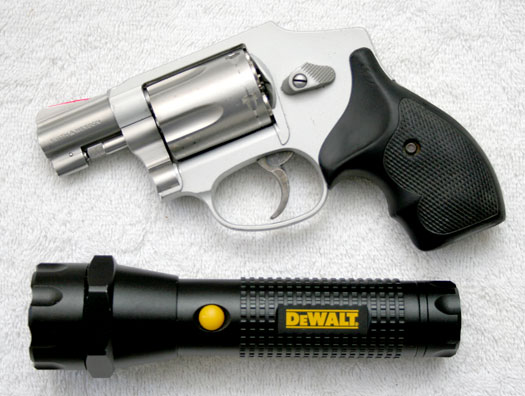
If you have any specific requests, feel free to let us know. We cannot guarantee to get to every one, but we will certainly try.
The Fundamental Flashlight Flaw
Here’s the fundamental problem: consumers can’t tell which is the best flashlight simply looking at the packaging or reading an advertisement.
Numbers can be fudged or presented in deceptive ways.
How are you supposed to know what the truth is?
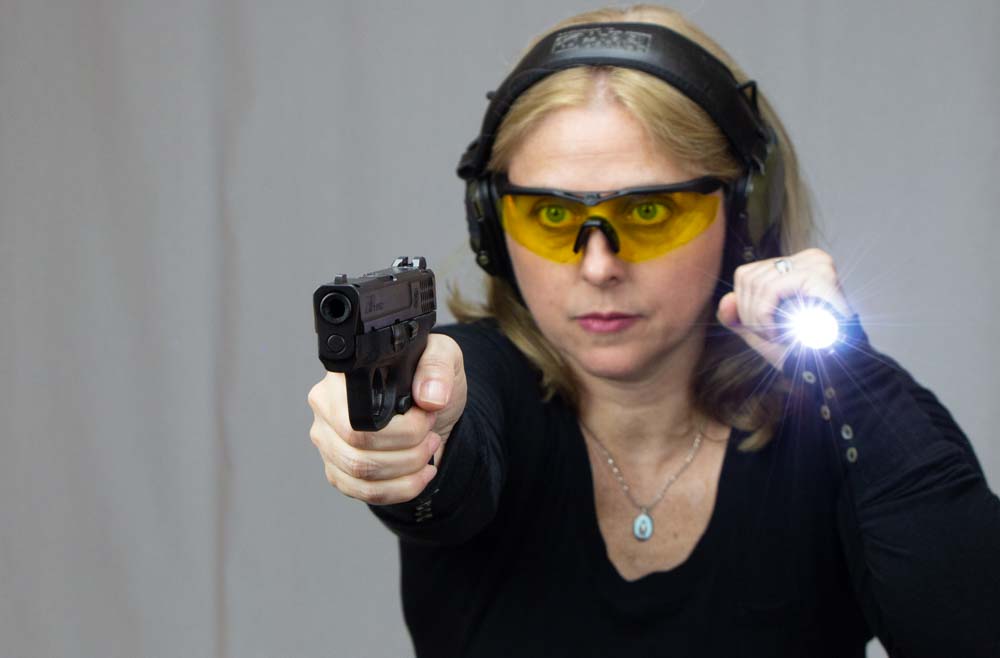
Some members of the flashlight manufacturing industry helped set up a standard in 2009, and they took control of the standard in subsequent years. However, the standard is designed by and for manufacturers – not for consumers. Further, the standard is voluntary meaning that no one has to adhere to it.
Even if the standard was universally used, it can be gamed.
Without independent testing and review, the consumer is not much better off with the standard than without it.
That’s where I come in: I work very hard to bring you reliable information that you can use to make informed buying decisions.
Testing Protocols
Note: These testing standards were last updated in January 2020. Updates include the addition of peak beam intensity measurements and further clarifications on other aspects of the testing. Additional information about the ANSI/PLATO FL1 standard is included farther down.
There has never been a better time in history for anyone looking for quality flashlights. The market is awash with manufacturers making all sorts of tactical and utilitarian handheld lights. However, with so many options, consumers can easily be overwhelmed by the marketing hype used by so many companies.
It is my goal to cut through the BS and give you a reasonable idea of the performance you can expect from each light.
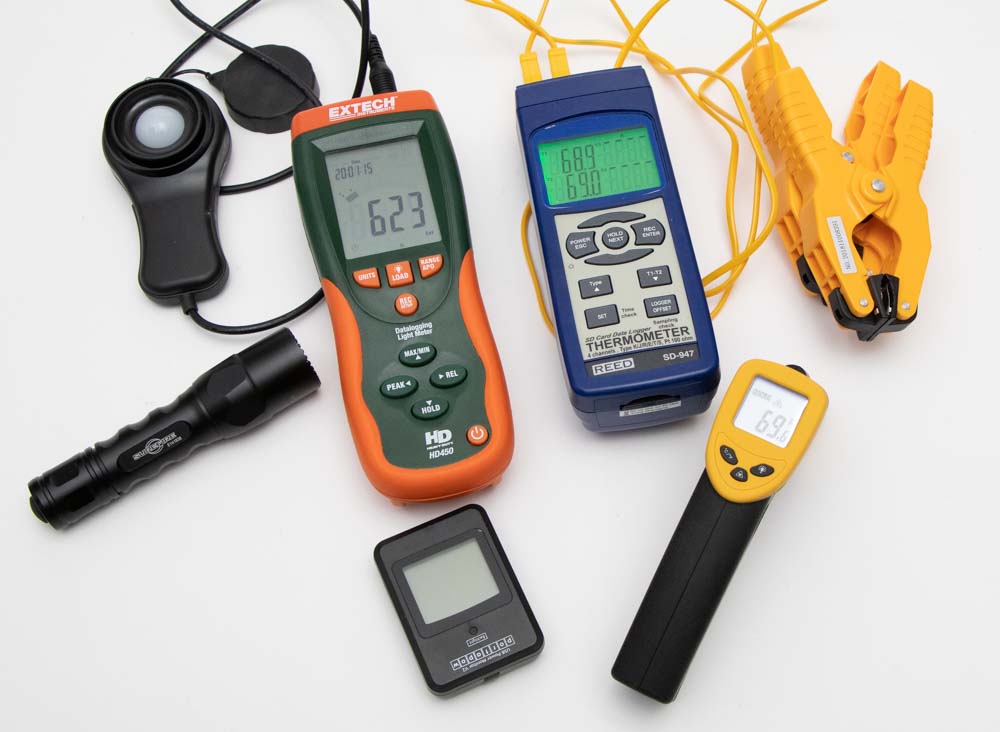
Working with members of both the flashlight and firearms world, I have developed a series of tests that I will perform on each flashlight I review. These tests are described in greater detail below. In summary, they are:
- output over time
- peak beam intensity
- heat generation
- impact resistance
- water resistance
In addition to these tests, I describe the various features and workings of the light along with my experiences while using it.
Please note: These tests are not scientific. While I try to control for some of the most obvious variables, I am not conducting these to establish any absolute stats or to prove/disprove a manufacturer’s stated specifications.
Rather, the data collected through this testing is intended to illustrate the relative usefulness of a flashlight and to provide limited comparison data between different lights tested with the same protocols.
Output Over Time
Two of the main things that many people are interested in are:
- How bright is the flashlight? and
- How long does it run?
This is one area where I believe the flashlight industry likes to keep you in the dark. Manufacturers test for both light output and runtime.
However, they do not offer any information regarding how bright for how long.
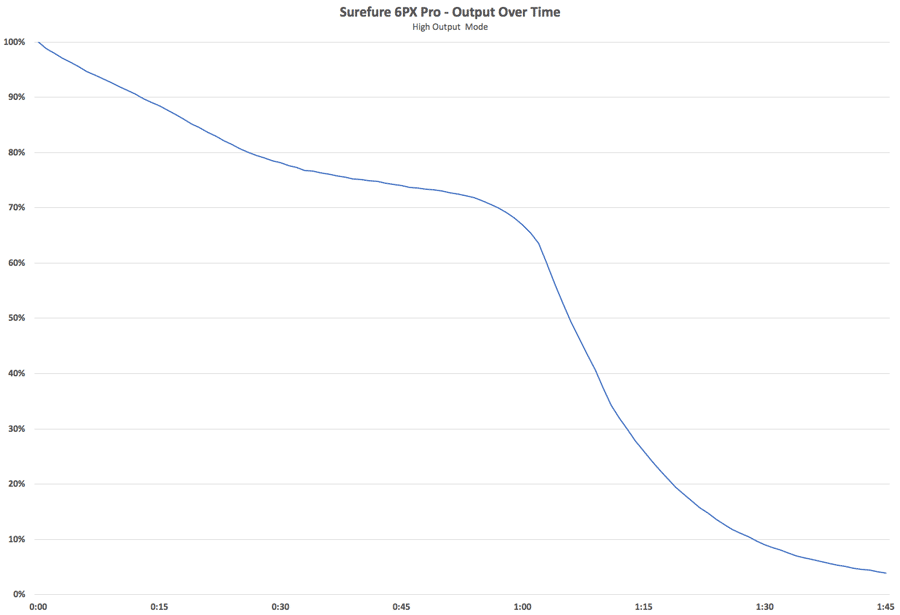
I test total light output over time and display the information in a graph similar to the one above. This gives you a quick and clear understanding of how long you can expect your flashlight to run on a single set of batteries.
I use a homemade integrating sphere with a light meter. The sphere uses an internal baffle and properly sized ports.
I do not measure for absolute light output (lumens) but instead test for how much light is given as a percentage of the initial light output.
Since all of the flashlights I test use the same measuring tools, the data should be a reliable tool for comparing my tested lights against one another. Further, if you assume the company reported an accurate total output, the data should be useful in comparing the company’s reported runtime to what I observed.
I report on runtimes to 50% of initial output and 10% of initial output.
The 50% output runtime is the amount of time in minutes that the flashlight emits at least half of its peak output. If you were to swap batteries when the flashlight became half as bright as its initial use, then this number would tell you how long each set of batteries will last for you.
I report the 10% measurement only because it is the output level used by the vast majority of manufacturers.
The difference between the two numbers may be suggestive of how accurate or overhyped other manufacturer data may be.
Peak Beam Intensity
I measure peak beam intensity in a manner consistent with the FL1 standard. I measure the surface light intensity (SLI) at 2 meters then use the formula of:
(SLI)—(distance²)=peak beam intensity
Peak beam intensity is reported in candelas.
Maximum beam distance is reported in meters and calculated from the peak beam intensity:
(peak beam intensity * 0.25)=maximum beam distance
Power Sources
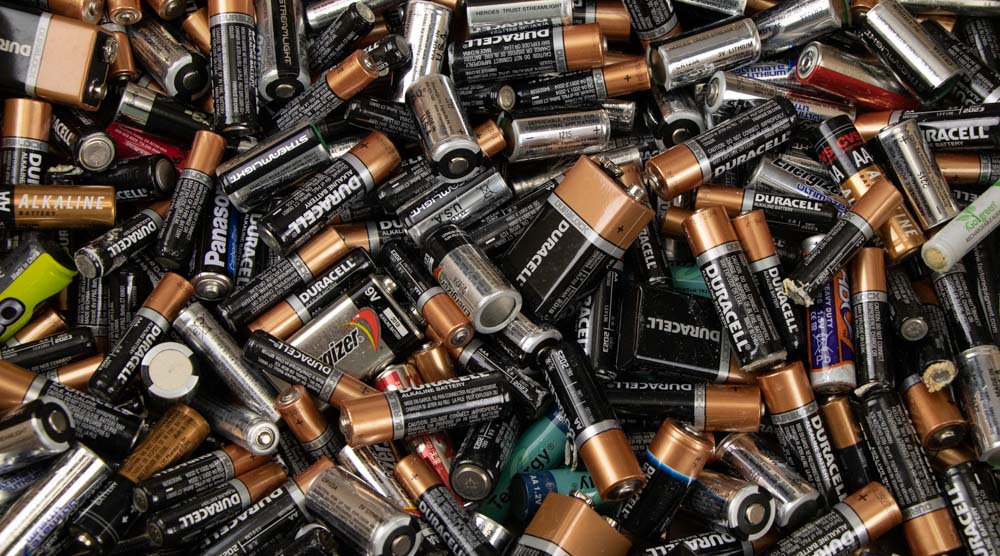
To provide the best possible comparison between the flashlights I test, I use the same battery type for all of the models. This removes the power source as a variable in the comparisons.
For each test, a fresh set of batteries is used. Testing is conducted with the following kinds of batteries:
- CR123A – Streamlight 85177
- common alkaline (AA, etc.) – Duracell Coppertop
- common size lithium (AA, etc.) – Energizer Ultimate Lithium
- less common batteries (button, 1/3N, CR2, etc.) – Duracell
- 18650 – the battery included with the light or as otherwise noted in the individual review article
For flashlights that ship with rechargeable batteries, the batteries will be fully charged per manufacturer recommendations prior to testing.
Heat Generation
During the run time testing described above, I use a data logging thermometer with a pair of pipe clamp thermometers to take surface temperature measurements of the flashlight at intervals of one minute. Depending on the efficiency of the electronics and the design of the light (use of radiator fins, etc.), temperatures can vary widely from light to light – even for lights with very similar output ratings.
Some flashlights can become very hot – even too hot to hold. If a light is going to become unreasonably warm, you should know about it prior to buying.
Impact Resistance
Flashlights are like any other tool; they will be dropped from time to time. It is important to know that your light will not fail because it hit slipped from your hand and hit the sidewalk.
Many manufacturers claim varying degrees of impact resistance. The most common is a 1-meter drop resistance, though 2 meters or more can also be claimed.
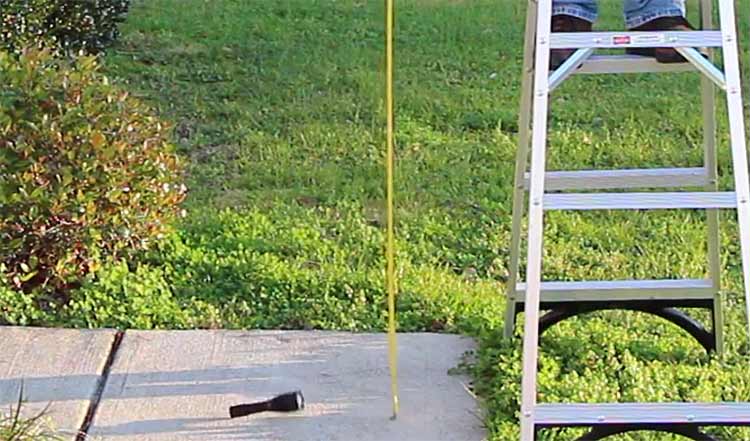
Imagine a flashlight as a cube with six sides. I drop the flashlight from each of those six “sides” onto a concrete sidewalk. The drop height is determined by the claims made by the manufacturer. If no claims of impact resistance are made, I test the light at a 1-meter height.
To ensure strikes on the head and tail of the flashlight, I use a PVC tube to guide the flashlight’s journey to the hard concrete. The tubes are sufficiently oversized to prevent slowing of the fall due to friction, but will still ensure the correct end hits the ground first.
If the light does not work normally after the six drops, it is considered a fail.
Additionally, I look at how the impacts affected the light’s body. If there are obvious cracks or other damage that are likely to affect the light’s long term use, it will also be considered a fail.
Surface scuffs and dings are expected. These alone will not constitute a fail.
Water Resistance
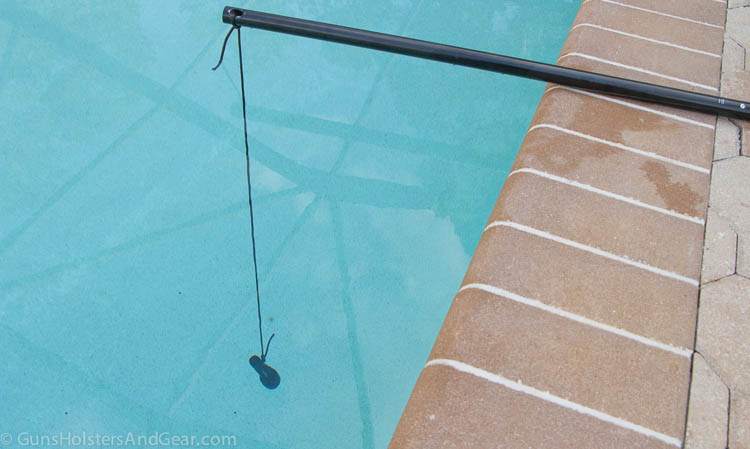
Many tactical flashlights are rated as being water-resistant or submersible. Water-resistance suggests the light is not going to die because it was splashed by a wave, spilled drink or even heavy rainfall. The term waterproof, however, means the light can be submerged for a period of time and continue functioning.
Most companies that list a light as water-resistant will list the light as IPX4 (splash resistant), IPX7 (submerged to 1 meter for 30 minutes) or IPX8 (submersible to a manufacturer specified depth greater than 1 meter for four hours.)
For my testing of waterproof claims, I use paracord to suspend the light in a saltwater pool. This works great for 1-meter testing. I have not yet developed a reasonable protocol for testing flashlights that claim waterproofing beyond one meter. However, I am in the process of building a new tool to test flashlights up to a depth of 50 meters. Once that comes online, I will add the information here.
In my testing, the water-resistance testing is done after the impact testing. That way if the drops compromised the integrity of the light’s body or seals, it will show up.
In my testing, the light will pass if it does not have substantial water intrusion and works normally after the test.
About the FL1 Standards
In my opinion, the ANSI/PLATO FL1 standard is for the exclusive benefit of flashlight manufacturers and not you. I see it as a proverbial fig leaf that can be used by a company to hide the truth about a flashlight’s real wold performance.
Essentially, the FL1 standard gives a mark of credibility when reporting specifications to reduce a buyer’s resistance to making a purchase.
ANSI/PLATO FL1 is a set of voluntary standards developed by a select group of portable light manufacturers to standardize testing of some flashlight specifications. I strongly believe the standards are not perfect and can be gamed.
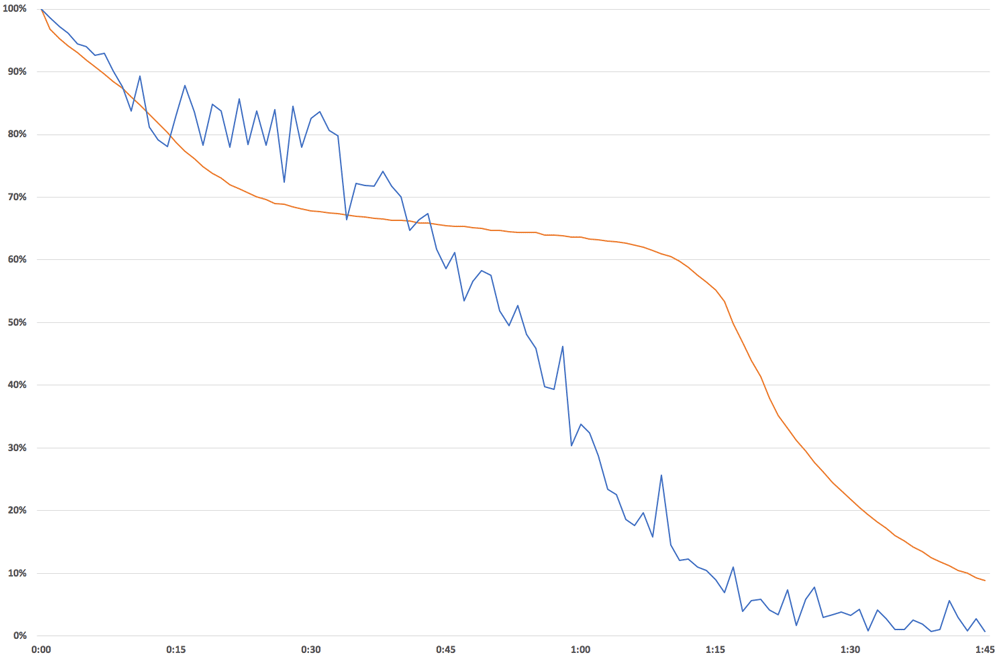
Although the standards are presented as a step forward for consumers, I believe there is a vast amount of room for improvement before I would consider them consumer-friendly.
The FL1 standards are voluntary, and not all flashlight manufacturers adhere to them. This means that a company could conceivably fabricate all of its specifications and unless you have about $20,000 in testing equipment, you can’t definitively prove otherwise.
Currently, the Portable Lights American Trade Organization (PLATO) and ANSI publish the FL1 standard for flashlight testing. In its own words, PLATO is a “trade group” with a mission that is “to promote the common interests of companies that manufacture portable lighting products…” It is not a consumer advocacy organization and there are no consumer representatives on its board of directors.
In fact, consumer advocates and organizations appear to be de facto barred from membership in PLATO due to the current membership rules.
Consider how difficult it is to obtain the actual FL1 standard.
Originally, the National Electrical Manufacturers Association and the American National Standards Institute developed and published the standards. At that time, they charged $70 for a copy of them. These first standards were published in 2009.
In 2010, PLATO was formed as an industry trade organization. It took over the development and maintenance of the standard.
A few years later PLATO released a 2016 update to the FL1 standards. With the new set of standards, the organization nearly tripled the price to $200. This made it unreasonably expensive for a consumer to see what is being tested.
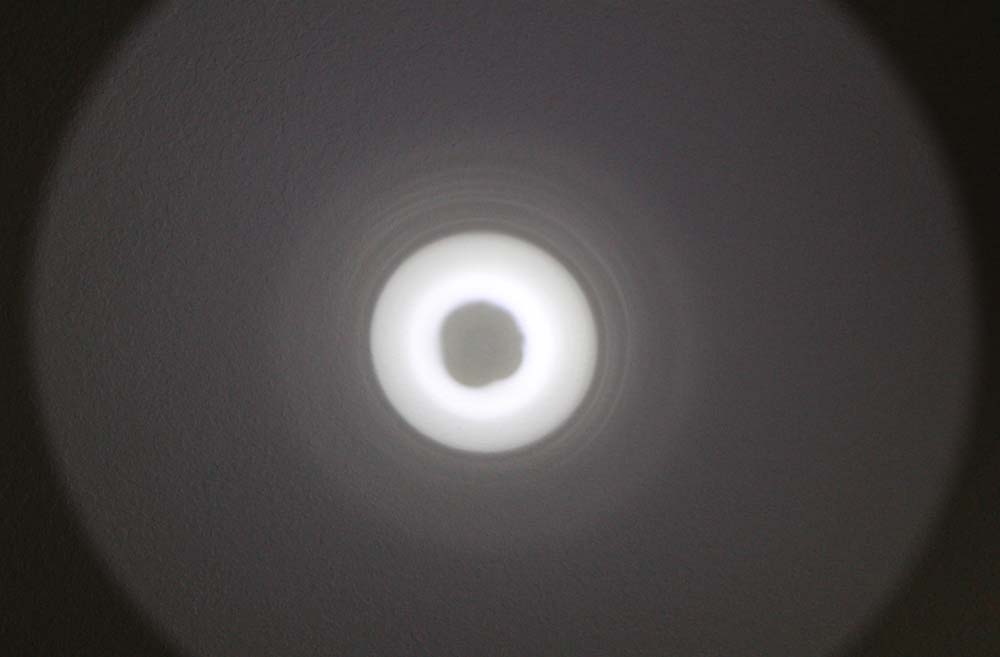
In 2019, PLATO updated the standard again – and raised prices yet again. Now the standard will cost a consumer $500 for the privilege to read them. Clearly, the intent is not to get the standard into the hands of the consumer.
Consider also, the enforcement of the FL1 standard. Under the original ANSI/NEMA standard, there was little provision for standard enforcement.
The 2016 update added additional enforcement abilities, but I’m not sure PLATO ever took any action against any company that violated the standard or used its FL1 standard without a license. When I filed a complaint about a specific manufacturer with PLATO in 2017, I received no information back from the organization about my complaint.
In my opinion, these are not the actions of a consumer-friendly organization. In fact, I currently urge caution when relying on any FL1 claims made by flashlight manufacturers.
What the FL1 Standards Test
Total light output (lumens) and runtime are one of the areas where the FL1 standard can be gamed by the flashlight manufacturers.
For the total light output measured in lumens, the flashlight is turned on and the highest reading measured by the testing equipment between 30-seconds and 2-minutes after the light has been turned on (FL1 Standard ANSI/PLATO 2016, page 11).
So, to get a high output number, the light could be designed to hit a peak 30 seconds into the run and then drop off to virtually nothing.
But wait, you say – ¦what about the runtime?
Well, in the FL1 standards, run time has very little to do with the output. According to the 2016 FL1 standard 2.4.5, run time is calculated from the peak measurement at the 30-second mark until the light dwindles down to a mere 10% of the peak.
In theory, an FL1 compliant flashlight could put out 1000 lumens at 30 seconds and then drop to 101 lumens at the 31-second mark. Then at 101 lumens, the light could limp along for two hours before finally dropping to the 10% threshold. The reported stats: 1000 lumens output with a two-hour runtime.
Clearly those stats do not tell the whole story and can paint an inaccurate picture in the consumer’s mind.
Good companies will publish a performance curve that shows output over time, but most do not.
Elzetta, a company that is not part of PLATO, put together this video to try to explain the problems with the standard here:
Recommendations
If you are just looking for a few quick recommendations for the best flashlight, here they are.
Many of the flashlights being made today are excellent. However, none of them are perfect for all purposes. So, you should have in mind a specific task that it will accomplish.
Here are some of my favorite flashlights for different purposes.
Best Tactical Flashlight
For general tactical duties, my current recommendation for the best tactical flashlight is the SureFire G2X Tactical.
In my article, SureFire G2X Flashlight Review, I describe that I found the light to be a great balance of light output, size and durability with a tail switch that is very instinctual in its operation. As a bonus, the light is reasonably priced.
As a runner-up for the best tactical flashlight, I like the Streamlight ProTac HL. I carried the original 600-lumen version of this light as a police officer and regular citizen for about six years before I started carrying the SureFire G2X. Frankly, both are excellent tactical flashlights.
Current versions of the ProTac HL have a 750-lumen emitter but are otherwise the same as the original.
Best EDC Flashlight
While the SureFire and Streamlight products mentioned above are a better choice in terms of brightness, they can be too large for many people to carry on an everyday basis. If you need something smaller, I recommend checking out the Fenix LD15R and the Streamlight ProTac 1AAA.
The Fenix LD15R is a tiny rechargeable light with a right-angle head. It uses a 16340 battery that is charged via MicroUSB. It offers great brightness for its size, a pocket clip and a magnetic base. I carry mine everywhere and use it daily. I cannot overstate how much I like this light.
For a less expensive alternative, consider the Streamlight ProTac 1AAA flashlight. It is a thin flashlight that runs on a single AAA battery. It offers a generous amount of light for its size, and with a standard alkaline battery will give a workable runtime of more than 30 minutes. I keep a lithium battery in mine for much longer runtimes – more than 2.5 hours. Read my Streamlight ProTac 1AAA review for more details.
Final Thoughts
It is not my intention to regularly change my testing procedures. That would make things difficult for you to try to compare two different lights that I have tested. However, as I test more and more lights, I update my testing procedures to ensure I provide you with the best information possible.
That said, I am open to suggestions on how to improve my reviews. Let me know what you think in the comments section. All reasonable suggestions are gladly accepted and will be considered.
